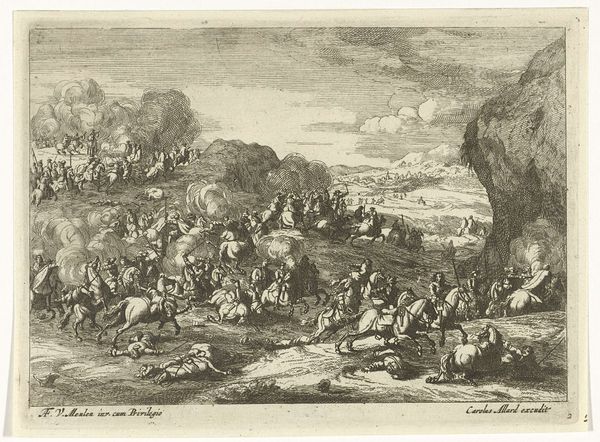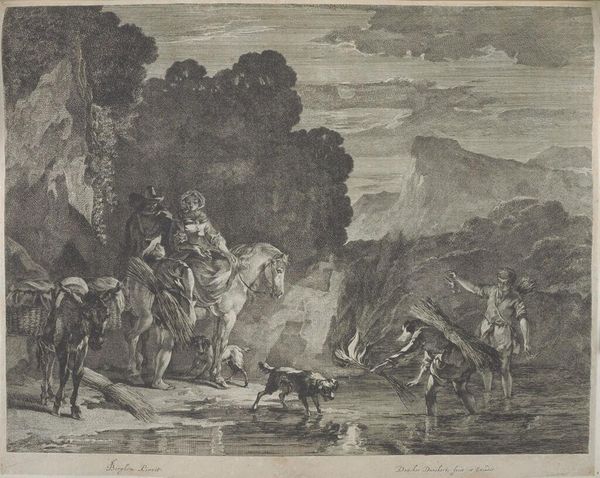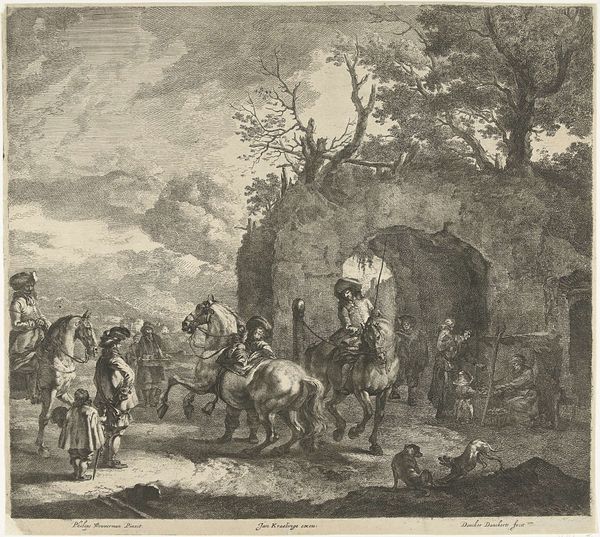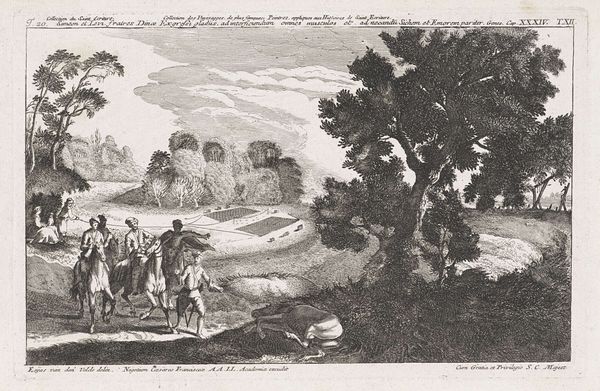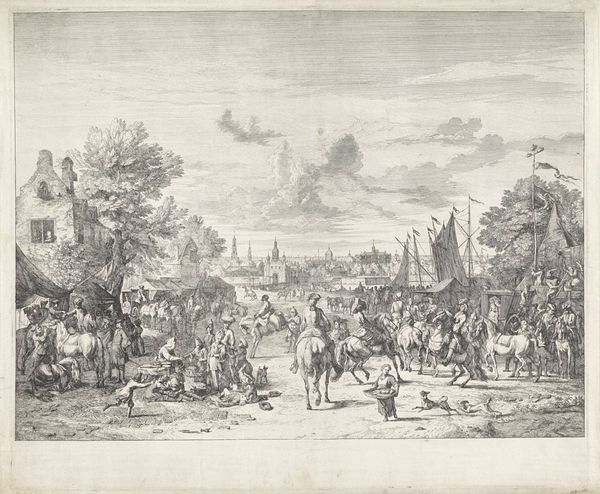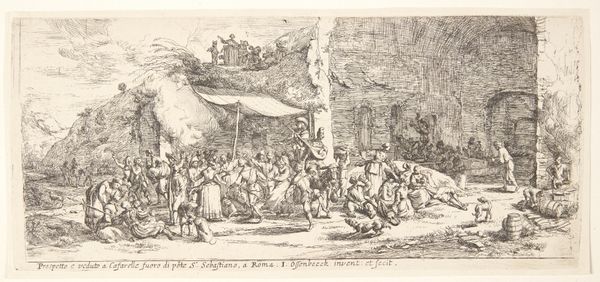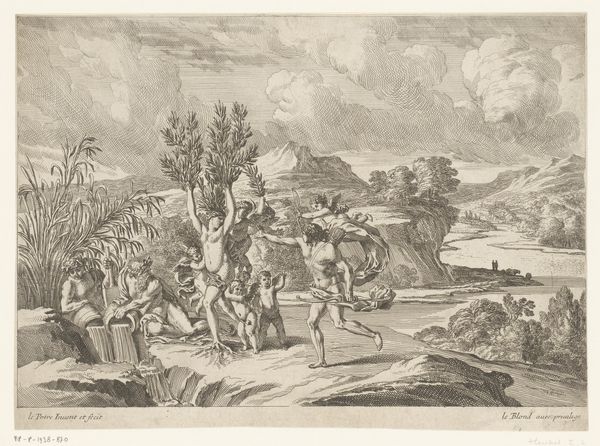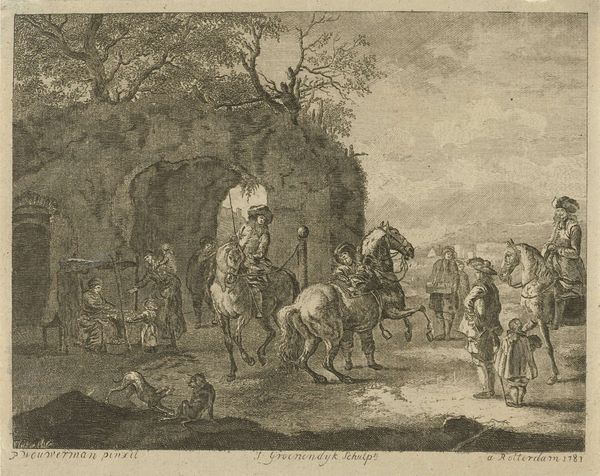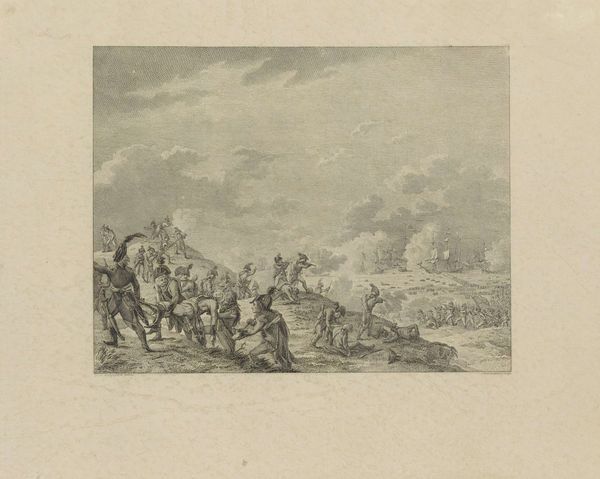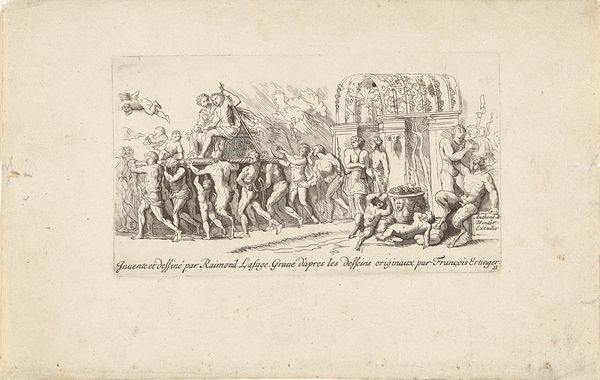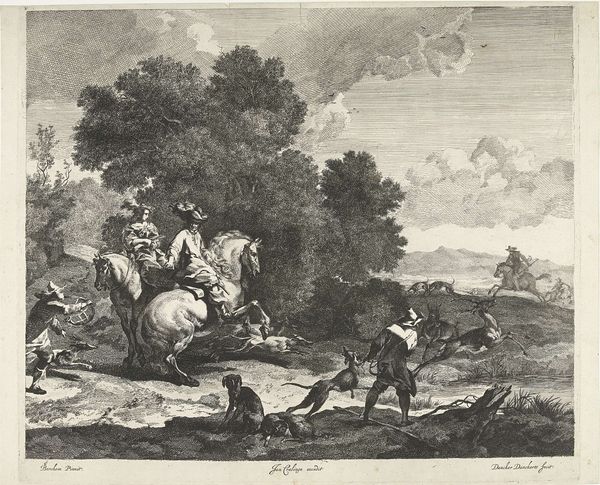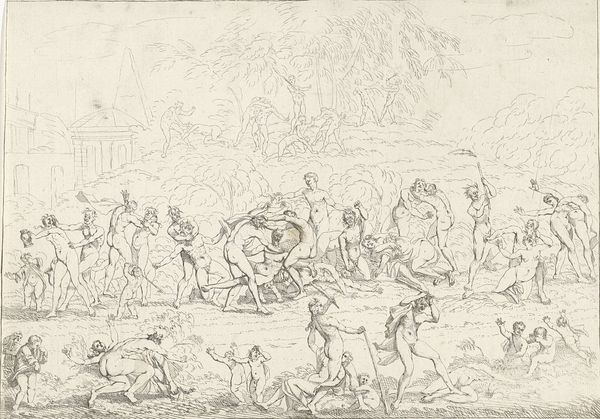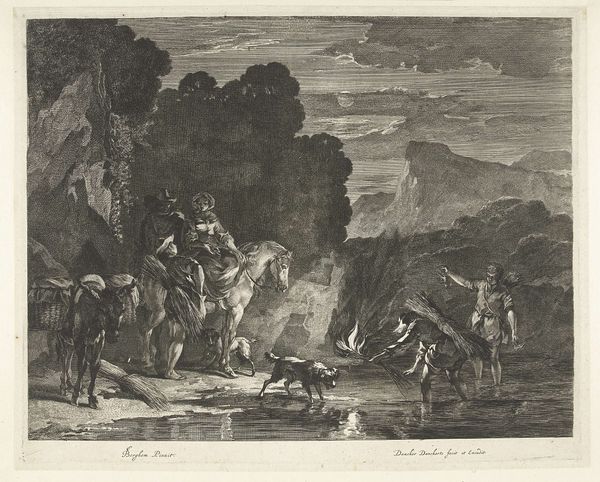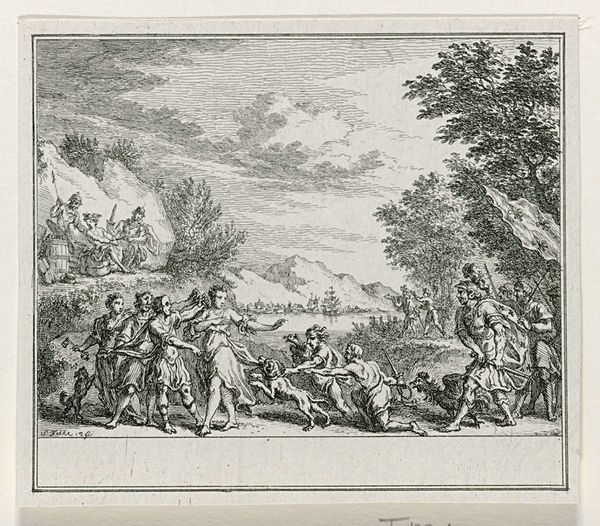
drawing, print, etching, pen
#
drawing
#
baroque
# print
#
pen sketch
#
etching
#
pencil sketch
#
old engraving style
#
landscape
#
figuration
#
pen
Dimensions: height 318 mm, width 425 mm
Copyright: Rijks Museum: Open Domain
Curator: Examining Jan van Ossenbeeck’s etching, "Tritonfontein bij de poort van San Paoli te Rome," created sometime between 1647 and 1655, what immediately grabs you? Editor: The hazy quality of the lines is fascinating, they remind me of sketches from art history books. The way the landscape and people are depicted evokes a sort of idyllic scene... almost like a postcard. What do you make of it? Curator: For me, the material execution speaks volumes. This isn't just a picture, it's a manufactured object. The etching process—the biting of the metal plate with acid, the labor involved in making multiples—is key. Consider the societal role of printmaking at the time: how did printed images affect ideas about Rome, landscape, and classical mythology for those who may never actually see it firsthand? Editor: That's really interesting! So, it's less about the artistic vision itself and more about the social impact of its... replicability? Curator: Precisely! We should be questioning how such a landscape like that one here is mass-produced and consumed, transforming into a commodity available for those of particular social groups. Note how labor is depicted too. What’s the relationship between the people resting near the fountain and the implied work behind creating this image, behind building that gate, that fountain? What constitutes work here and how is value created? Editor: I didn't consider that. I was too focused on the narrative within the landscape, but you're right. Thinking about it as a mass-produced item, makes me reconsider the value of art versus craft, like where is the boundary? Curator: And perhaps there isn't one. Or maybe the act of assigning or removing those boundaries also performs a certain labor! How do we assign "value" and who benefits from that process? Editor: This reframes the work entirely. Thanks for bringing this perspective! Curator: Likewise. It's always helpful to reconsider the layers of production, not just the image itself.
Comments
No comments
Be the first to comment and join the conversation on the ultimate creative platform.
